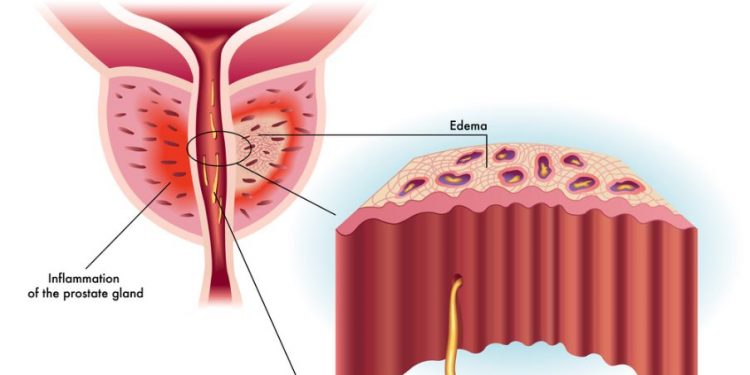Prostatitis symptoms can range from mild to severe. The severity of these symptoms depends on the type of prostate gland infection and your response to treatment.
Common prostatitis symptoms include a fever, chills, low back pain, a feeling of pressure or heaviness behind the scrotum and frequent urination. Other symptoms may be a sudden need to urinate or an urgent need to urinate, a painful urinary tract, or difficulty getting an erection.
Your doctor will do a physical and rectal exam to diagnose prostatitis. For the physical exam, your doctor will insert a gloved finger into your rectum and feel the prostate for swelling and tenderness. They will also look for enlarged lymph nodes in the groin area and do a blood test to check for infection.
If your doctor thinks you have bacterial prostatitis, they will give you antibiotics that kill the bacteria that cause it. They can be given intravenously (into a vein) or taken orally.
You will have to take the antibiotics for four to six weeks. During that time, you will need to drink plenty of fluids and get a lot of rest. This is because the antibiotics can make you ill, so it’s important to stay well during treatment.
It can help to keep a diary of your symptoms and how they change over time. This can help your doctor see how the disease is progressing and to work out the best treatment for you.
Other treatments for bacterial prostatitis include nonsteroidal anti-inflammatory drugs, such as ibuprofen or naproxen; hot sitz baths; and bowel softeners. Men who have sexual problems can take medicines like sildenafil (Viagra) or tadalafil (Cialis).

Kegel exercises are also helpful for some men with chronic bacterial prostatitis, as they tighten the muscles that hold urine in the bladder and keep it in the proper position. They may be done two to three times a week and can help relieve some of the symptoms.
These exercises are also used to prevent a problem called overactive bladder. If a man has overactive bladder, they can be taught to do these exercises, which will relax the bladder muscles and reduce the pain.
Some people find that complementary therapies, such as massage, aromatherapy, and acupuncture, can be helpful in relieving the pain and stress caused by prostate inflammation. These treatments can be done at home or in a clinic.
You should always ask your doctor about any alternative medicine you might try. They will let you know if it is safe and what side effects you might have.
Your doctor may suggest a pelvic massage to help empty the ducts in your prostate gland, which can ease pain. It is also helpful to ejaculate regularly, as this can help remove some of the fluid that collects in your prostate.
There is no cure for prostatitis, but many patients can get relief from their symptoms and enjoy a better quality of life by following the advice of their doctor or nurse. There are also support groups and some medications that can help.









